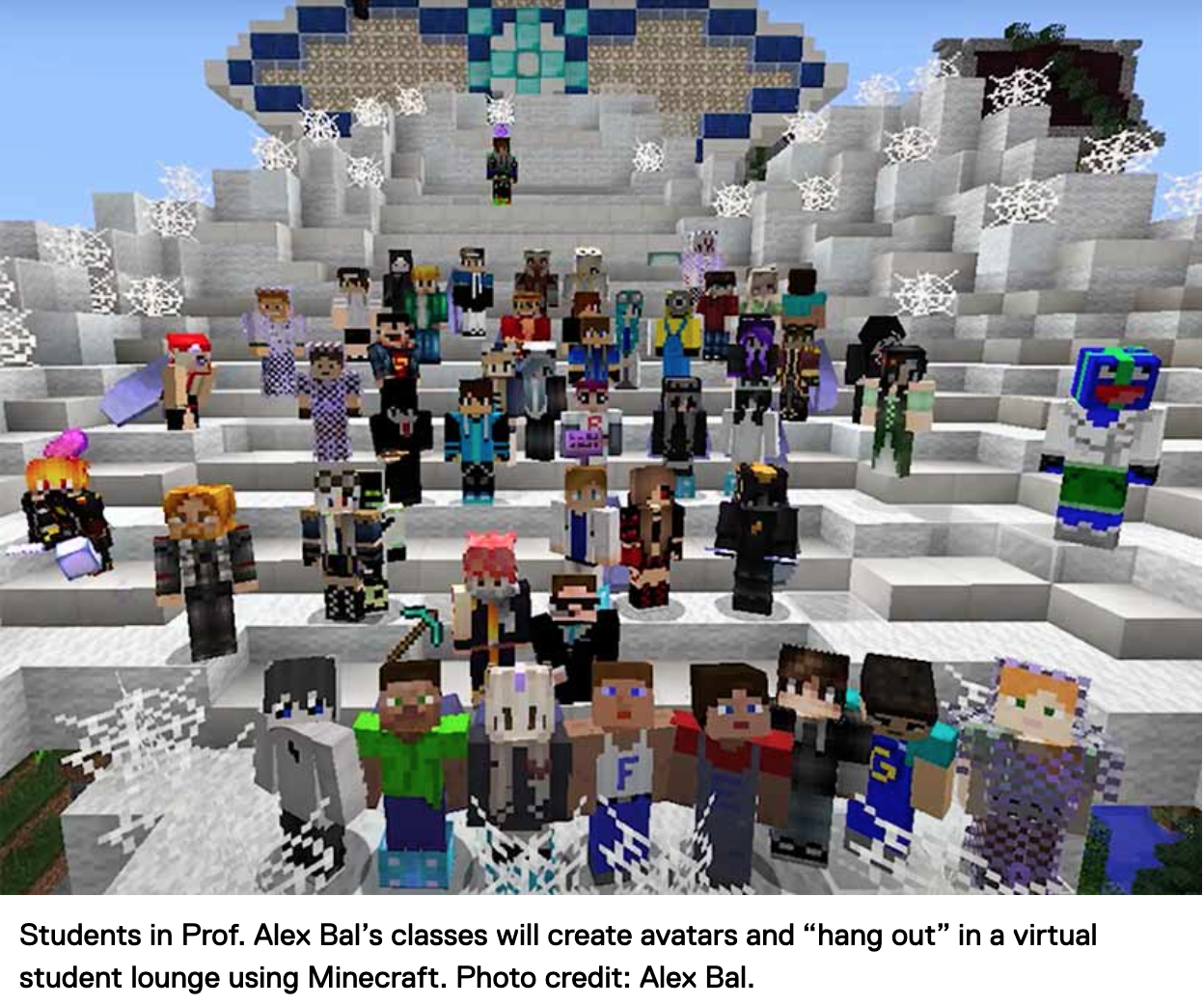
This is the fifth of 10 Lessons from a Post-Pandemic World. For the other nine, click here.
“…we need to take a more holistic approach, reward innovation in teaching, build it into program planning, evaluate it, and properly resource it.
Instructors responded in many different ways to the challenge of online teaching
Some merely moved their classroom lectures online through video streaming, which is neither innovative nor likely to be effective.
Others followed advice from instructional designers and tried to incorporate previously identified best practices from earlier applications. This may be more effective, but it is not really innovative, by definition.
A smaller number tried something completely different.
For instance, one professor created a virtual student lounge, using the popular game Minecraft, with avatars that enable students to have a place to connect with each other. Another created a virtual newsroom where students play the role of the managing editor in a fictional newsroom, where they address various editorial situations.
However, to what extent will innovations spread beyond an individual instructor, resulting in changes to teaching across a subject discipline, for instance?
Is innovation always effective?
And although the teaching may be new or innovative, is it effective? What kind of learning results? Is it the same or different from traditional methods, and if different is it better? In other words, innovative teaching needs to be carefully evaluated.
If we want innovation to work, in the sense that it leads to better learning or outcomes, and spreads beyond one or two enthusiastic individuals, we need to look at what encourages or sustains innovation in organizations.
In particular, we need to look at what strategies administrators can use to encourage successful and widespread innovation in teaching.
Above all, we need to think very concretely about what teaching and learning could or should look like in the future. Our reach should exceed our grasp, driven by our assessment of the needs of students in the 21st century, and not by the existing institutional requirements they must fit into. The best place to develop such a vision is at the program level.
A holistic approach
At a senior management level, it is essential to think holistically about teaching, innovation and the culture of the organization.
Without knowing where innovative teaching fits in the big picture, it will be difficult if not impossible to support and expand innovative teaching beyond the individual or instructor.
This means looking at what we want to achieve in teaching and learning.
For instance, do we want more flexibility for students in how courses are delivered? Are we trying to reach more diverse or disadvantaged students? Do we want students to develop high-level intellectual skills?
Without such a framework or set of criteria, it is difficult to decide whether to support or adopt an innovation.
New or better outcomes
On the other hand, innovative teaching can lead to identifying new or better goals.
For instance, one science instructor, experimenting with virtual reality, found his efforts resulted in better intuitive thinking among his research students, enabling them to create better hypotheses and avenues of research.
As a result of innovation, therefore, it may be necessary to reexamine our academic goals, although is difficult to do if the institution, academic department or program does not have clear strategies or goals for teaching and learning.
We need innovation in how we deliver and teach, in how we support learners, how we prepare instructors, and above all how we use technology for teaching.
As important and valuable as it is for an individual instructor to try something new in the classroom, we need to be more ambitious and look at innovation at the program and institutional level. Pockets of innovation are all well and good, but key questions at the program level also must be addressed, such as:
- Do course outcomes address the competency expectations of a professional licensing body?
- Do teaching methods reinforce best practices in the field of study across all courses?
- Does the delivery reflect best practices in professional ethics and conduct?
- Do learning outcomes adequately lay the foundation for the next learning experience so students not only succeed but excel?
- Do students increase their level of intellectual skills such as critical thinking and problem-solving as they progress through a program?
- Does the program provide a basis for lifelong development of such skills after graduation?
If our colleges and universities are to remain relevant in the 21st century, it is the whole institution that needs to change. For this to happen, we need to take a more holistic approach, reward innovation in teaching, build it into program planning, evaluate it, and properly resource it.
Our institutions may be well-meaning and at a strategic level may support the idea of innovation, but we need to be much more professional and hard-nosed about making innovation in teaching and learning work.
For Lesson 6, click here: We are beginning to see the advantages of media and open educational resources for teaching and learning









 Dr. Tony Bates is the author of eleven books in the field of online learning and distance education. He has provided consulting services specializing in training in the planning and management of online learning and distance education, working with over 40 organizations in 25 countries. Tony is a Research Associate with Contact North | Contact Nord, Ontario’s Distance Education & Training Network.
Dr. Tony Bates is the author of eleven books in the field of online learning and distance education. He has provided consulting services specializing in training in the planning and management of online learning and distance education, working with over 40 organizations in 25 countries. Tony is a Research Associate with Contact North | Contact Nord, Ontario’s Distance Education & Training Network.

